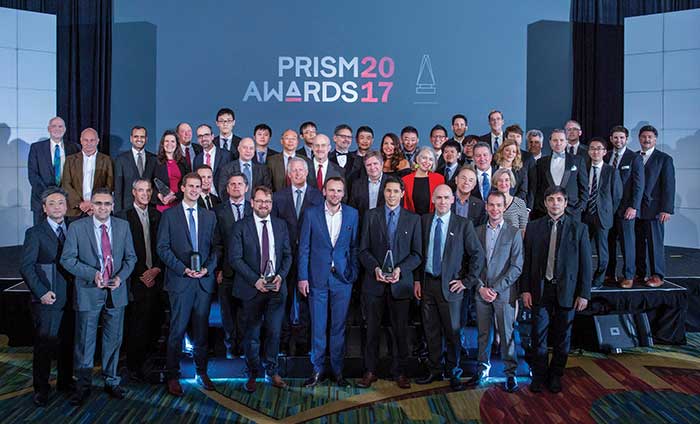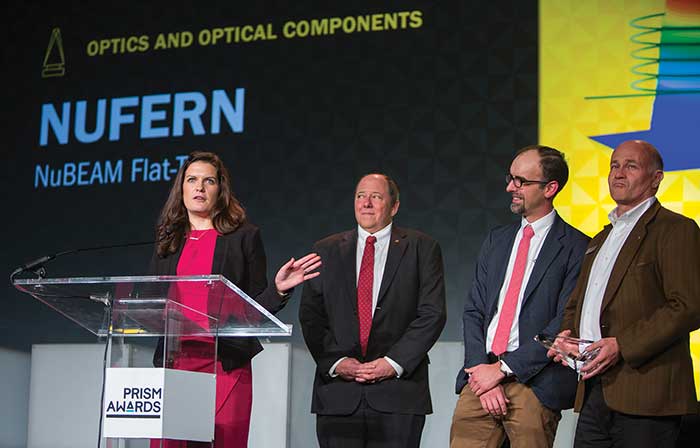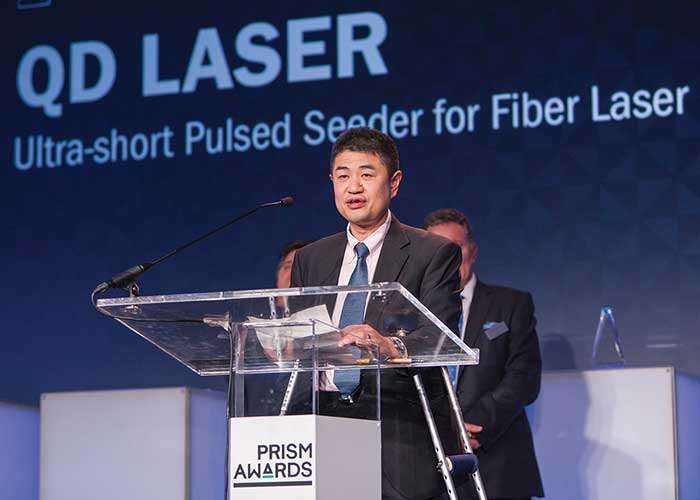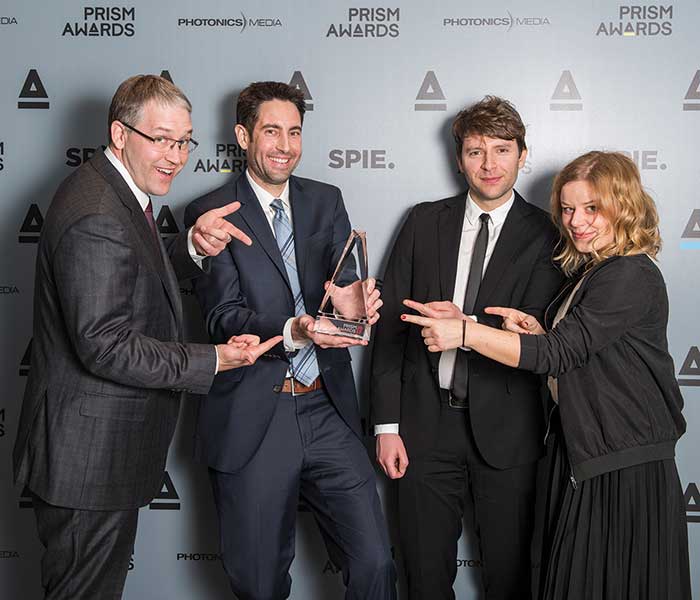What do the world’s smallest FTIR spectrometer and a smartphone add-on sensor for noncontact bioimaging have in common? The 2018 Prism Awards for Photonics Innovation. These products are among 30 finalists for the awards that recognize the industry’s top innovations and groundbreaking technologies.
Co-sponsored annually by SPIE and Photonics Media, the “Oscars of the Photonics Industry” marks its 10th year in 2018. Winners will be announced during the awards gala on Jan. 31 in San Francisco.
“Ten years in, the Prism Awards are casting an even wider light on the photonics industry,” said SPIE CEO Eugene Arthurs. “Each year, categories for the awards are driven by the innovations entered, providing direct insight into thriving and emerging hot markets.” He noted changes to this year’s program, including the number of categories — this year there are 10, rather than the usual nine. “Biomedical entries are featured in two categories, illustrating the vitality of that field.”

The 2017 winners and event sponsors — Photonics Media and SPIE. Images courtesy of SPIE.
The 2018 Prism Awards finalists, biomedical entries:
Life Science Instrumentation
neaspec GmbH (Martinsried, Germany)
A cryogenic optical atomic force microscope mounted on a tailored closed-cycle dry-cryostathe, the Cryo-neaSNOM is a first-of-its-kind nanoanalytics tool that enables ultrahigh-resolution optical near-field microscopy <20 nm. Specifically, the new device allows optical imaging and spectroscopy on single nanocrystals, nanodomains and nanostructures in the visible, IR and THz spectral range at cryogenic temperatures. It can perform nanoscale optical near-field measurements at ultracold temperatures (<10 to 300 Kelvin). Its closed-cycle, dry-cryostat technology enables push-button cryogenic near-field experiments without the need for a liquid helium supply.

Nufern engineers accept the 2017 Optics and Optical Components award for their NuBEAM Flat-Top fiber technology. Images courtesy of SPIE.
Quantumcyte (California, U.S.)
The Q1 ArraySeQ is a single-cell analysis platform for phenotypic profiling. Capable of individually assessing thousands of cells simultaneously, the system correlates that information to the genetic data collected from each cell. The unique capability of linking phenotypic to genotypic data allows for the development of personalized treatment options for cancer and other genetic diseases.
Tomocube (Daejeon, South Korea)
The HT-2 is the first optical microscope that enables the visualization and simultaneous measurement of 3D refractive index tomography and 3D fluorescence imaging of live cells and tissues. Simultaneous 3D fluorescence imaging provides molecular-specific information about target samples and provides correlative analysis. The new microscope helps scientists and researchers to investigate live cells and analyze the morphological, biophysical and biomechanical properties of those cells.

Katharine Schmidtke, who works with Strategic Sourcing Optical Technology at Facebook, announces the award for Optics and Optical Components. Images courtesy of SPIE.
Medical Diagnostics and Therapeutics
ContinUse Biometrics (Tel Aviv, Israel)


Engineers from QD Laser accept the 2017 Industrial Laser award for their Ultra-short Pulsed Seeder for Fiber Laser. Images courtesy of SPIE.
Lightpoint Medical Ltd. (Chesham, England)
The LightPath Imaging System is a molecular imaging camera designed for intraoperative analysis of surgical specimens. It enables intraoperative tumor margin assessment using optical molecular imaging and features rapid acquisition time and high spatial resolution (117 μm). The LightPath system employs Cerenkov Luminescence Imaging, an imaging technology for optical imaging, namely of positron emission tomography tracers.

The Crystalline Mirror Solutions team celebrates its 2017 Prism win in the Materials and Coatings category. Images courtesy of SPIE.
Lumedica (North Carolina, U.S.)
Touting laboratory-grade OCT imaging technology, the OQ LabScope is a powerful, affordable device for detection of eye diseases. With an A-Scan Line rate of 8800/second and 750-μW output power, it is designed for use by commercial and academic research scientists studying the micro-layers of biologic tissue.

Leica Geosystems engineers show off their BLK360 Imaging Laser Scanner, which earned the 2017 award in the Metrology category. Images courtesy of SPIE.
Other Prism Awards finalists:
Detectors and Sensors
NKT Photonics (Birkerød, Denmark)
Princeton Infrared Technologies (New Jersey, U.S.)
Xenics NV (Leuven, Belgium)
Environmental Monitoring
Block Engineering (Massachusetts, U.S.)
Daylight Solutions Inc. (California, U.S.)
Illumination and Light Sources
Lumileds (California, U.S.)
OSRAM Opto Semiconductors GmbH (Munich)
SoraaLaser (California, U.S.)
Imaging and Cameras
Daylight Solutions Inc. (California, U.S.)
Luminar Technologies Inc. (Florida, U.S.)
Teledyne DALSA (Waterloo, Ontario, Canada)
Lasers
Class 5 Photonics (Hamburg, Germany)
KMLabs (Colorado, U.S.)
OptoRes (Munich)
Materials Processing and Additive Manufacturing
Han’s Laser Technology (Shenzhen, China)
LIMO GmbH (Dortmund, Germany)
NUBURU Inc. (Colorado, U.S.)
Optics and Optomechanical Components
AdlOptica Optical Systems GmbH (Berlin)
Optotune Switzerland AG (Dietikon, Switzerland)
Spectrolight Inc. (California, U.S.)
Test and Measurement
Gamma Scientific (California, U.S.)
Si-Ware Systems (Cairo)
Spheryx Inc. (New York, U.S.)